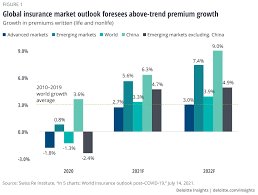FAQ US Insurance Agent Industry Statistics 2022
1. What is the overall revenue of the US insurance industry in 2022?
In 2022, the total revenue of the US insurance industry reached approximately $1.3 trillion, reflecting steady growth from the previous year.
2. How many insurance agents were there in the US in 2022?
There were approximately 500,000 licensed insurance agents across the United States in 2022, highlighting the sector's significant employment contributions.
3. What are the main segments of the US insurance market?
The US insurance market is broadly segmented into health, life, property, and casualty insurance. Property and casualty insurance represented the largest segment, accounting for nearly 60% of the industry’s total revenue, followed by health insurance.
4. How has technology impacted the insurance industry in 2022?
Technology has significantly influenced the insurance industry in 2022. About 70% of insurance agencies adopted digital tools, such as CRM systems and automated claim processing, to enhance their operations and client interactions.
5. What challenges did insurance agents face in 2022?
Insurance agents faced several challenges in 2022, including navigating evolving regulatory requirements, increased competition from direct insurers and online platforms, and the need to balance technological adoption with maintaining personal client relationships.
6. How did consumer behavior shift in 2022 regarding insurance services?
In 2022, there was a noticeable increase in demand for online insurance services, with consumers seeking convenient ways to compare and purchase policies. Despite this shift, the personal touch and expertise of insurance agents remained highly valued for complex insurance needs.
7. What opportunities for growth were available to insurance agents in 2022?
Insurance agents had several opportunities for growth in 2022, including enhancing the customer experience through technology, specializing in niche markets, and providing educational resources to clients about insurance products and risk management.
8. How did regulatory changes affect insurance agents in 2022?
Regulatory changes introduced in 2022 impacted insurance agents by requiring them to stay informed and adapt their practices to comply with new consumer protection regulations and ensure fair practices in insurance transactions.
9. What is the future outlook for the US insurance industry and insurance agents?
The future outlook for the US insurance industry suggests continued evolution driven by technological advancements, shifting consumer preferences, and ongoing regulatory developments. Insurance agents will need to embrace digital transformation while focusing on personalized service to remain relevant and successful.
10. Where can I find more information about the US insurance industry?
For further insights into the insurance industry and to explore opportunities, industry reports and expert analyses are valuable resources. They provide up-to-date information and help stay informed about trends and developments in the sector.




















